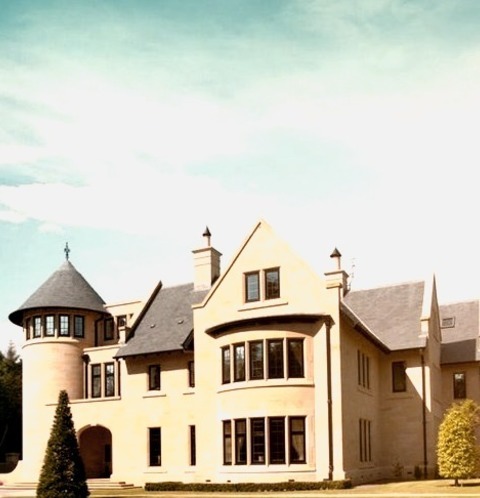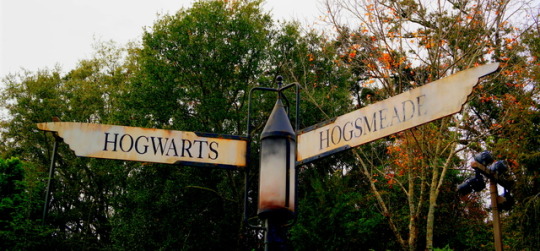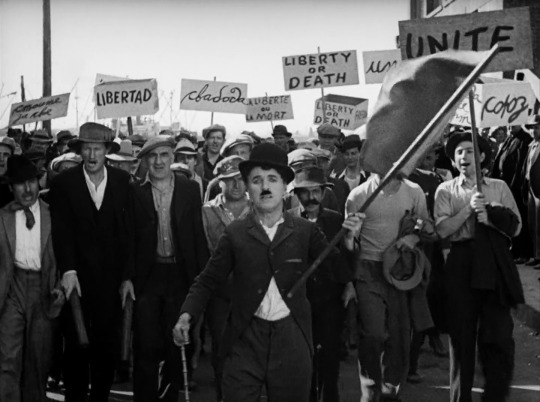#superhome
Text
Parramatta Lifestyle Store offers the best home entertainment solutions in New South Wales
When it comes to home entertainment, finding the right technology and support can transform your living space into a personal cinema, concert hall, or gaming arena. Located in the heart of New South Wales, the Parramatta Lifestyle Store, SuperHome, offers a premier selection of home entertainment solutions tailored to meet every taste and budget. Discover why SuperHome is your top choice for enhancing your home entertainment experience.
Unrivalled Product Range
SuperHome boasts one of the most extensive assortments of home entertainment technology in NSW. Whether you're in the market for the latest ultra-high-definition televisions, immersive surround sound systems, or state-of-the-art streaming devices, SuperHome has it all. The store’s carefully curated selection includes top brands known for their quality and innovation, ensuring you access to the best products available.

Custom Home Entertainment Systems
Understanding that one size does not fit all, SuperHome excels in offering custom home entertainment solutions. Their experts are adept at designing systems that not only fit perfectly within your space but also suit your specific entertainment preferences. Whether you desire a multi-room audio system that fills your entire home with music or a dedicated home theater that replicates a cinematic experience, SuperHome can tailor a solution just for you.
Smart Home Integration
As smart technology becomes increasingly integral to modern living, SuperHome leads the way with sophisticated home entertainment integration services. From voice-controlled systems that adjust your settings with simple commands to automated home theaters that prepare your viewing environment with the touch of a button, SuperHome ensures your technology is both futuristic and user-friendly. Their experts can integrate your entertainment systems with other home automation products, creating a seamless and efficient home ecosystem.
Hands-On Demonstrations
Choosing the right home entertainment system can be daunting. At SuperHome, you can interact with the technology firsthand through their in-store demonstrations. This immersive experience allows you to gauge the quality and functionality of different systems, ensuring you make an informed decision. Feel the depth of a speaker’s bass, witness the clarity of a 4K display, and understand the user-friendliness of the latest streaming devices—all before making a purchase.
Home Entertainment Expert Installation and Support
To complement its top-tier product offerings, SuperHome provides professional installation services, ensuring that your new home entertainment system is set up to perfection. Their technicians are skilled in the art of discreet wiring, optimal audio setup, and video calibration, providing you with a hassle-free installation experience. Post-installation, SuperHome remains committed to your satisfaction, offering ongoing support and maintenance services to keep your systems in peak condition.
Community Involvement and Events
SuperHome is not just a store; it’s a part of the Parramatta community. The store frequently hosts events, workshops, and demonstrations that help educate customers on the latest in technology and how to get the most out of their home entertainment systems. These events are fantastic opportunities to meet other tech enthusiasts in the area, share ideas, and learn new tips and tricks.
For those seeking the best in-home entertainment solutions in NSW, a visit to SuperHome in Parramatta is a must. With their extensive range of products, custom installation options, and a firm commitment to customer service, SuperHome is equipped to enhance your living space with the latest in entertainment technology. Experience the future of home entertainment by visiting SuperHome, or explore their offerings online at SuperHome and start planning your ultimate home entertainment setup today.
0 notes
Photo

Stone Cheshire
Inspiration for a huge timeless beige three-story stone exterior home remodel with a tile roof
0 notes
Text
With the sale of a medieval castle in Ireland, the future buyer won’t just get an 800-year-old 10-bedroomed superhome. They’ll also inherit 10,000 years of Irish history, 7 ghosts and a holy well!
55 notes
·
View notes
Photo

新年快樂(在 Superhome.) https://www.instagram.com/p/Cm0SXwwJizw/?igshid=NGJjMDIxMWI=
5 notes
·
View notes
Text
Superhome Center Cyprus
Superhome department stores as the ultimate destination for all the needs of your home, garden, or office completed with more than 100 super offers every month, at prices that outmatch any other store in Cyprus.
Business Name: Superhome Center Cyprus
Address: 30 Kambos Street, Strovolos, Nicosia 2030
Phone: +357 22 205555
Website URL: https://www.superhome.com.cy/
Social Links:
Facebook - https://www.facebook.com/SuperhomeCenterCy
Instagram - https://www.instagram.com/superhomecenter/
LinkedIn - https://www.linkedin.com/company/superhome-center/about/
YouTube - https://www.youtube.com/channel/UCcCTL9VwHJhYZSc0phv_HoQ
Pinterest - https://gr.pinterest.com/superhomecenter/
Google Business Profile - https://maps.app.goo.gl/t7jUXFSLcZA2bEzv7
0 notes
Text
SuperHomes Interiors: Elevate Your Space with Inspired Design | Interior Solutions
Transform your space with SuperHomes Interiors. Explore our inspired design solutions and elevate your surroundings with style and functionality.
0 notes
Photo

Good date for an executed contract! 02•02•2020 ~ #superbowlsunday #superbowl2020 #superhome #newconstruction #newhome #modern #modernhome #miami #hip #trendy #millenials #millennialhomebuyer #thepickteam #coldwellbanker #southflorida #southfloridarealestate #southfloridarealtor #miamidadecounty #welivewhereyouvacation #picofday #sundayfunday https://www.instagram.com/p/B8F_uJuAeI9/?igshid=1qdcs9e8bdga2
#superbowlsunday#superbowl2020#superhome#newconstruction#newhome#modern#modernhome#miami#hip#trendy#millenials#millennialhomebuyer#thepickteam#coldwellbanker#southflorida#southfloridarealestate#southfloridarealtor#miamidadecounty#welivewhereyouvacation#picofday#sundayfunday
0 notes
Video
The VIP waiting list to buy one of the most popular model homes is 50 people long! They call it the #SuperHome #NextGEN #MultiGenerational #Realtor #Househunting (at San Bernardino, California)
1 note
·
View note
Photo


I need to go baaaaaaaaaaaaaaaack :(
#hogwarts#hogsmeade#home#superhome#hogwartsismyhome#harrypotter#universal#hp#goals#ineedback#my photography
2 notes
·
View notes
Text
Aeotec Z-Wave LED Bulb 70W RGBW
Buy Aeotec Z-Wave LED Bulb 70W RGBW online from Super Home Automation Australia. Z-Wave LED Bulb from Aeon Labs will light your room in any of 16 millions of colors and turn it into a smart place.

0 notes
Link
The ASP Super Home is about helping homeowners elevate their biggest assets to the strongest, most secure, most energy efficient and most valuable version of itself,” says ASP founder Jonathan

0 notes
Text
A clase obreira
vimeo
O cinema pode ser, entre moitas outras cousas, unha ferramenta útil para o cambio social. Moitos cineastas o consideraron como tal, dende Serguei M. Eisenstein a Ken Loach pasando por Elio Petri, e non albergaron ningunha dúbida do seu poder para mover vontades entre o público, crear conciencia –de clase– e motivar revolucións máis grandes ou máis pequenas.
Mentres que segue a ser certo que unha grande parte do corpus fílmico histórico tende ó escapismo mental, a deixarse levar cara a mundos exóticos ou imaxinarios nos que substituímos os nosos problemas reais por outros moito máis satisfactorios, épicos, dramáticos e belos –e non serei eu quen rexeite esta función case terapéutica do audiovisual–, non deixa de ser certo que existe un cinema cos pés na terra e co foco posto na realidade: aquilo que habitualmente denominamos cinema social. A etiqueta é un pouco ambigua, porque até do cinema máis comercial e escapista se poden extraer mensaxes de carácter social, protestas contra o poder e reivindicacións dun mundo mellor. Un western, polo tanto, tamén pode ser cinema social.
A clase traballadora adoita ser a protagonista colectiva dos filmes que podemos considerar de temática social, do cinema ancorado á realidade de cada día no que nos erguemos, almorzamos e nos desprazamos até un lugar no que recibimos un soldo a cambio da nosa forza de traballo. Isto convértese en arquetipo cando empregamos a metonimia, da que xa temos falado nalgunha ocasión, para representar o groso da clase obreira –da que tamén forman parte, como non, tanto cowboys como estrelas de cinema, artistas, detectives ou calquera outro oficio máis fotoxénico para a gran pantalla– en pequenos colectivos de traballadores localizados nunhas coordenadas e nun tempo concretos, cuns problemas específicos e un inimigo personificado nun xefe ou nunha cúpula de directivos que fan o que sexa por beneficiarse sen prexuízo do que sufran os seus empregados.
Para que o arquetipo sexa efectivo, os filmes nos que a clase obreira é a protagonista adoitan orbitar arredor de sectores na que a precariedade laboral e a opresión son máis evidentes: o arduo traballo do campo ou do mar, a tediosa burocracia de oficina e o duro, repetitivo e en ocasións perigoso sector industrial.
É necesario, para entender a estreita relación entre o cinema e a industria, acudir á súa historia. Pois a mesma revolución industrial que impulsou o progreso tecnolóxico entre a época vitoriana e os comezos do intenso século XX é a culpable da precariedade laboral e da brecha de clases denunciada polo cinema social e tamén é a razón pola que podemos sentarnos a gozar dunha película nas nosas horas de ocio, xa que o cinematógrafo é un dos froitos desta época de velocidade, de mecanicismo e de enxeño. Coa desigualdade e a inxustiza chegan os movementos sociais que tratan de contrarrestalas: o marxismo, os soviets, a Revolución Rusa, o triunfo bolxevique e o cinema puño de Serguei M. Eisenstein, a quen podedes coñecer pola famosa escena do carro de bebé caendo polas escadas de Odessa mentres os soldados do tsar descenden, disparando a matar, en Броненосец Потёмкин ou O acoirazado Potemkin (1925). Tamén é interesante analizar a visión do cinema europeo nacente que, en propostas como a colosal Metropolis (Fritz Lang, 1926), trata de reconciliar a clase obreira coa burguesa nun discurso que se parece moito ó que enarboraban os primeiros fascistas, que se proclamaban a si mesmos como a solución a todos os problemas sociais. Xa sabemos como remata a historia.
O cinema soviético foi o que mantivo a masa traballadora diante dos focos durante máis tempo, mentres que no sistema de estudos de Hollywood –o cinema “clásico”– ocorría xusto o contrario. Despois da Segunda Guerra Mundial, o capitalismo coa faciana máis amable invadiu os fogares dos EUA: o do soño americano, o consumismo e a clase media traballadora pero acomodada que podía permitirse comprar un microondas e aforrar un pouco de tempo para ir ó cine as fins de semana. Mentres, os problemas sociais e a precariedade laboral non desaparecía, mais calquera intento de visibilizala podía ser motivo de sospeita durante a época máis vergoñenta dos estudos de Hollywood: o macartismo ou a “Caza de Bruxas”, un periodo histórico caracterizado polo medo ó “perigo vermello” durante a xénese da Guerra Fría, un medo paranoico a que calquera cidadán americano fose un espía soviético tratando de propagar a súa ideoloxía, poñendo a diana sobre os traballadores do cinema en Hollywood, nun momento no que exercían unha grande influencia sobre a sociedade. Defender ó obreiro converteuse nun tabú e poucos directores se atreveron a desafiar á censura, como John Ford adaptando The grapes of wrath (1940) ou How green was my valley (1941), amosando as penurias da clase obreira sen filtros. Nalgún momento teremos que abordar as complexidades da figura de John Ford nesta bitácora. Todo chegará!
O caso é que o macartismo se consumiu a si mesmo na súa espiral de censura, sospeita e delación. Cando os anos sesenta introduciron aire fresco tanto no cinema estadounidense como no europeo –co antecedente do neorrealismo italiano, que tamén se achegaba ós problemas da clase traballadora–, os novos cinemas recolleron o espírito do Maio do 68, ó igual que outras disciplinas como a música folk e a literatura, e cineastas como Godard utilizaron ó colectivo dos estudantes como unha personaxe coral que representaba a avanzada dunha revolución obreira. As crises sucesivas e o neoliberalismo tamén provocaron reaccións e protestas en forma de cinema social, sempre coa intención de motivar o cambio.

E aquí finalizan os meus apuntamentos históricos, pois o arquetipo relacionado coa loita da clase obreira, ademais dunha evolución complexa como a que acabamos de relatar, ten características e lugares comúns que se extraen da análise de filmes de diferentes épocas, nacionalidades e xéneros. Xa mencionamos cales eran os sectores laborais máis agradecidos nas historias centradas nos traballadores. Destes sectores proceden os espazos máis habituais para o noso arquetipo: o rural, a oficina e, sobre todo, a fábrica.
Mentres que o rural adoita ser espazo para conflitos entre os labregos e os terratenentes ou sobre a supervivencia en épocas de escaseza e a oficina, unha gaiola na que os traballadores se debaten entre a submisión a un xefe e a un sistema ou a persecución dos seus soños, nunha tendencia máis individualista, a fábrica é o espazo para a folga e a loita polos dereitos do colectivo. Un lugar moito máis específico pero con características especiais para converterse no espazo perfecto para estas historias é o da mina, cun dos oficios máis duros e perigosos nos que a morte axexa en cada esquina en forma de derrubamento, fuga ou explosión e incluso cando chega o retiro se arrastran as consecuencias dunha vida de desgaste físico e psicolóxico terrible.
Unido a estes espazos de traballo industrial existen tropos visuais que se repiten para crear a atmosfera ideal: o fume da máquina de vapor, a faciana do obreiro tinguida de carbón ou de graxa e, por riba de todo, as poleas, engrenaxes e mecanismos da máquina. O binomio obreiro-máquina está presente neste tipo de historias dende o comezo, en filmes como Modern times (Charles Chaplin, 1936) no que o progreso tecnolóxico aparece como un inimigo, nun discurso case ludista no que o traballador, no canto de verse beneficiado pola automatización dos procesos, vese obrigado a competir coa máquina forzando a súa produtividade ou sendo totalmente substituído por ela no peor dos casos. É un debate en plena actualidade, se queredes a miña opinión, en tempos de intelixencia artificial e vehículos autónomos.
Fican temas no tinteiro, incluso afastándose do cinema social, pois os obreiros oprimidos constitúen vítimas perfectas para que un heroe –chámese superhome, cabaleiro, pistoleiro ou samurai– as salve do seu opresor, por poñer un exemplo. Mais prefiro finalizar aquí mesmo, lembrando a frase coa que comecei este artigo e reflexionando arredor da idea de que o cinema pode ser un vehículo de propaganda e alienación, de escapismo barato ou caro... máis tamén, nas mans adecuadas, unha ferramenta para o cambio social, un altofalante para as voces silenciadas, unha arma contra a inxustiza, un espello da sociedade, un canto á humanidade e á esperanza e un berro de liberdade.
Até o episodio vindeiro!
#cinema#cine#social cinema#cinema social#cine social#trabajadores#obreros#traballadores#obreiros#clase traballadora#clase trabajadora#working class#workers#clase obrera#clase obreira#loita de clases#lucha de clases#galego#galicia#1st of May#1 de Maio#máquinas#fábrica#ludismo#machine#factory#Elio Petri#Ken Loach#Fritz Lang#Charles Chaplin
1 note
·
View note
Link
It is not quite true that behind every great fortune lies a great crime. Musicians and novelists, for example, can become extremely rich by giving other people pleasure. But it does appear to be universally true that in front of every great fortune lies a great crime. Immense wealth translates automatically into immense environmental impacts, regardless of the intentions of those who possess it. The very wealthy, almost as a matter of definition, are committing ecocide.
A few weeks ago, I received a letter from a worker at a British private airport. “I see things that really shouldn’t be happening in 2019,” he wrote. Every day he sees Global 7000 jets, Gulfstream G650s and even Boeing 737s take off from the airport carrying a single passenger, mostly flying to Russia and the US. The private Boeing 737s, built to take 174 passengers, are filled at the airport with around 25,000 litres of fuel. That’s as much fossil energy as a small African town might use in a year.
Where are these single passengers going? Perhaps to visit one of their superhomes, constructed and run at vast environmental cost, or to take a trip on their superyacht, which might burn 500 litres of diesel an hour just ticking over, and which is built and furnished with rare materials extracted at the expense of beautiful places.
Perhaps we shouldn’t be surprised to learn that when Google convened a meeting of the rich and famous at the Verdura resort in Sicily in July to discuss climate breakdown, its delegates arrived in 114 private jets and a fleet of megayachts, and drove around the island in supercars. Even when they mean well, the ultrarich cannot help trashing the living world.

A series of research papers shows that income is by far the most important determinant of environmental impact. It doesn’t matter how green you think you are; if you have surplus money, you spend it. The only form of consumption that’s clearly and positively correlated with good environmental intentions is diet: people who see themselves as green tend to eat less meat and more organic vegetables. But attitudes have little bearing on the amount of transport fuel, home energy and other materials you consume. Money conquers all.
The disastrous effects of spending power are compounded by the psychological impacts of being wealthy. Plenty of studies show that the richer you are, the less you are able to connect with other people. Wealth suppresses empathy. One paper reveals that drivers in expensive cars are less likely to stop for people using pedestrian crossings than drivers in cheap cars. Another revealed that rich people were less able than poorer people to feel compassion towards children with cancer. Though they are disproportionately responsible for our environmental crises, the rich will be hurt least and last by planetary disaster, while the poor are hurt first and worst. The richer people are, the research suggests, the less such knowledge is likely to trouble them.
Another issue is that wealth limits the perspectives of even the best-intentioned people. This week, Bill Gates argued in an interview with the Financial Times that divesting (ditching stocks) from fossil fuels is a waste of time. It would be better, he claimed, to pour money into disruptive new technologies with lower emissions. Of course we need new technologies. But he has missed the crucial point: in seeking to prevent climate breakdown, what counts is not what you do but what you stop doing. It doesn’t matter how many solar panels you install if you don’t simultaneously shut down coal and gas burners. Unless existing fossil fuel plants are retired before the end of their lives, and all exploration and development of new fossil fuel reserves is cancelled, there is little chance of preventing more than 1.5C of global heating.
(Continue Reading)
#climate change#environment#money#inequality#politics#the left#The Guardian#progressive#progressive movement#climate crisis
173 notes
·
View notes
Photo

Mirall trencat, de Mercè Rodoreda.
A Marx, Nietzsche i Freud se’ls anomena, sovint, els “mestres de la sospita”. Perquè tots tres, des de les seves diferents perspectives i disciplines, acabaren confluint en la denúncia que allò que es veu no és, en realitat, la realitat. Marx parlava de les diferents estructures econòmiques; Nietzsche del superhome que supera el que els demés opinen d’ell; i Freud parlava, és clar, del subconscient, allò que, en realitat, ens regeix, amagat darrera una consciència que aparenta tenir el control.
I Rodoreda li explicava a la Pilar Miró en una carta mai publicada (però molt oportunament citada per la Marta Nadal en el prefaci d’aquesta edició) que ella sempre havia cregut que aquest Mirall trencat té, en realitat, dos protagonistes: el petit Jaume i el jardí de la finca dels Valldaura. Perquè tant se val la miríada de personatges que hi apareixen; o la diversitat d’espais, estances i llocs on transcorre. Rodoreda, seguint els corrents de l’època i molt influenciada per Freud, planteja el cosmos dels Valldaura com acarament entre el pla superior, el de les aparences, el de la casa senyorial, i el pla inferior, el subconscient, encarnat, literalment, per un jardí simbòlic ple de referències constants a allò que els personatges viuen.
I el petit Jaume, és clar, com a encarnació de la innocència més pura, aquella que no pot evitar ser víctima de tot el que l’envolta.
La història dels Valldaura i de la seva finca abraça el pas del temps, el canvi de segle, l’adveniment de la Guerra Civil i l’inici de la posguerra. Però també els lligams i embolics entre tots els personatges, amos i servents, que pul·lulen per l’orografia de la novel·la. Les aparences, els conflictes, els drames i tragèdies són denunciats per uns espais físics, per uns escenaris que sempre han sabut el que realment ocorria.
I l’oblit. Ah!, l’oblit. Aquell contra el que lluitem per deixar petjada, per sentir que hem estat alguna cosa més que una simple polsim emportat pel vent a poc que exhalem el darrer sospir. Però també l’amor, aquell prohibit, aquell passional, acarat a l’amor “necessari”, el “convenient”, el “presentable” i oficial. Personatges sempre perseguits per les vides que no van arribar a portar, pels camins que mai van seguir, pels amors que mai van consumar o continuar.
Farcidíssima d’un simbolisme complex i ric, Mirall trencat roman com una de les grans obres de la literatura catalana i una novel·la fascinant de lectura apassionada i inevitable.
1 note
·
View note
Video
youtube
ENG
We’re the superhumans (2016).
CAT
Som els superhomes (2016).
CAS
Somos los superhombres (2016).
#commercial#ad#ads#advert#advertising#anuncio#anuncios#anunci#anuncis#publicitat#publicidad#aviso#avisos
1 note
·
View note
Text
Elevate Your Interiors with Superhomes - Unleash the Potential of Beautiful Spaces
Transform your living spaces into stunning havens of style and comfort with Superhomes Interiors. Our expert design solutions empower you to create captivating interiors that reflect your unique taste.
Visit us: https://www.superhomes.co/interiors
0 notes